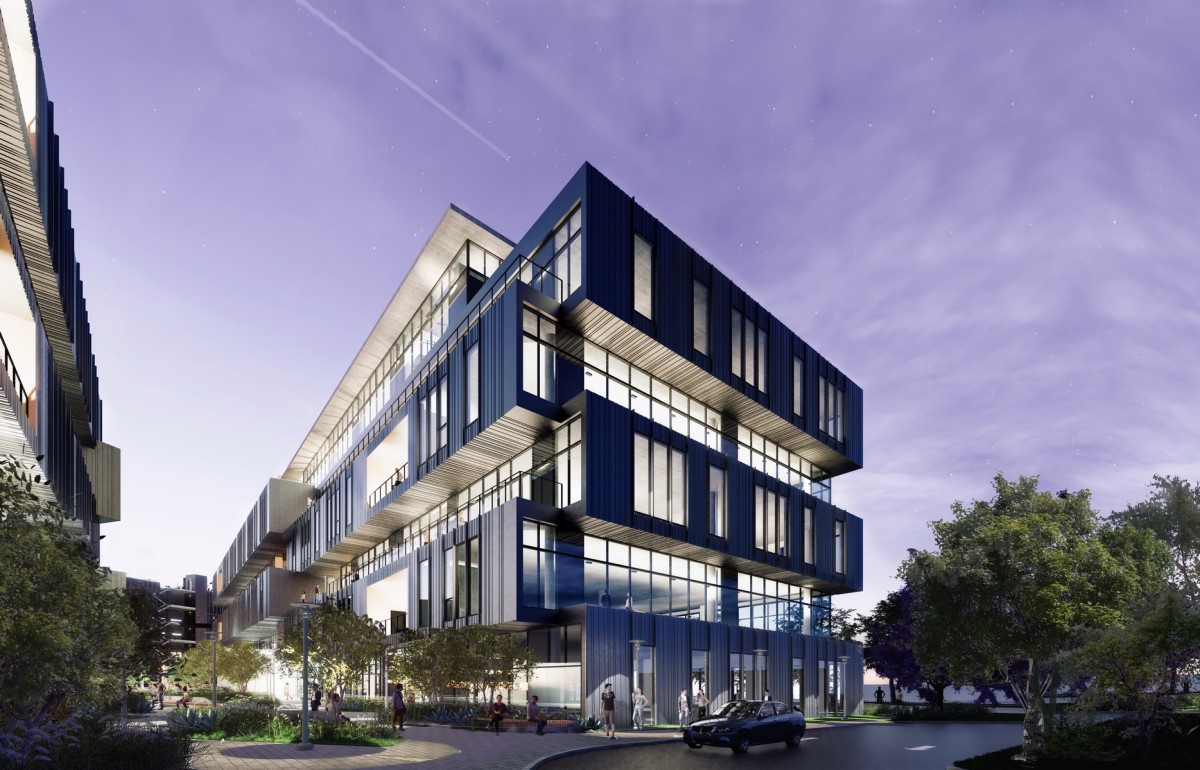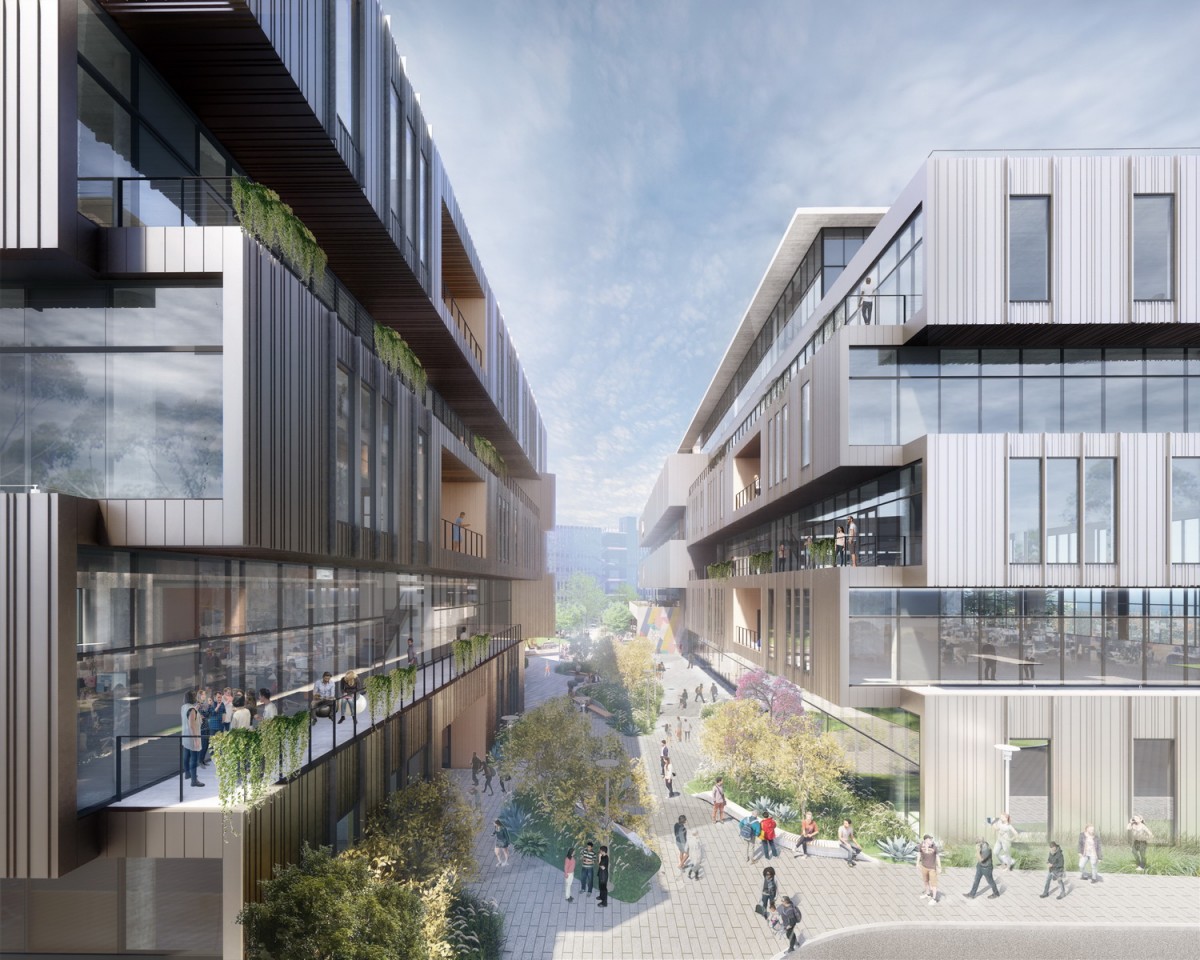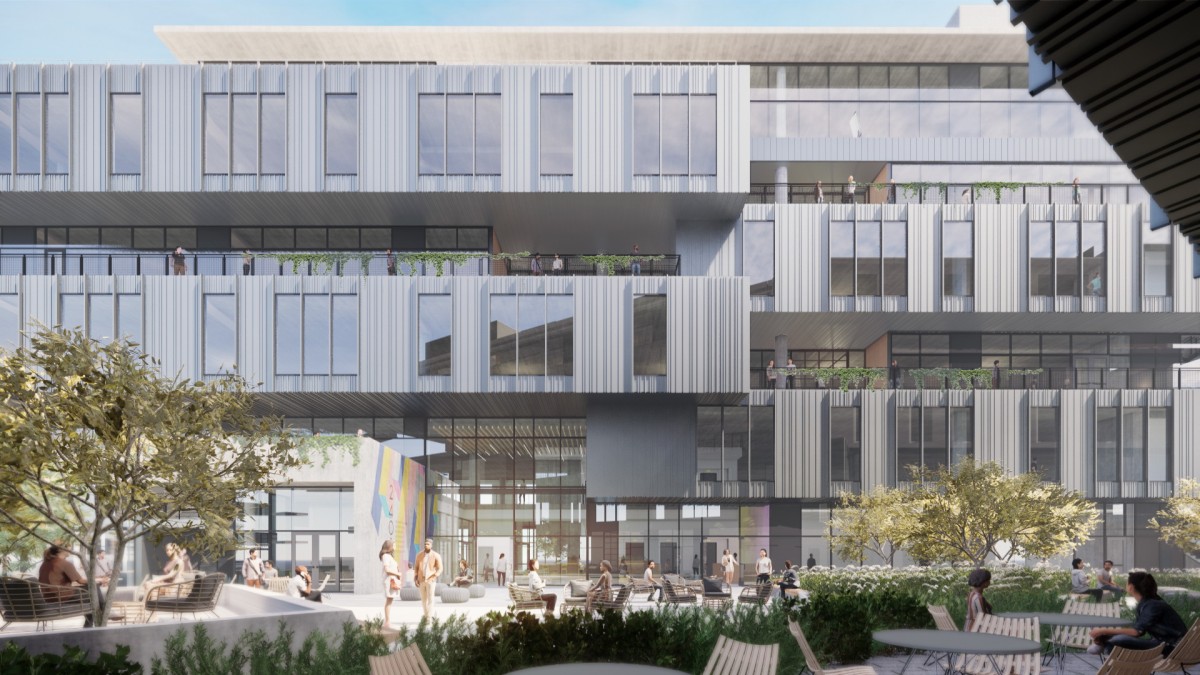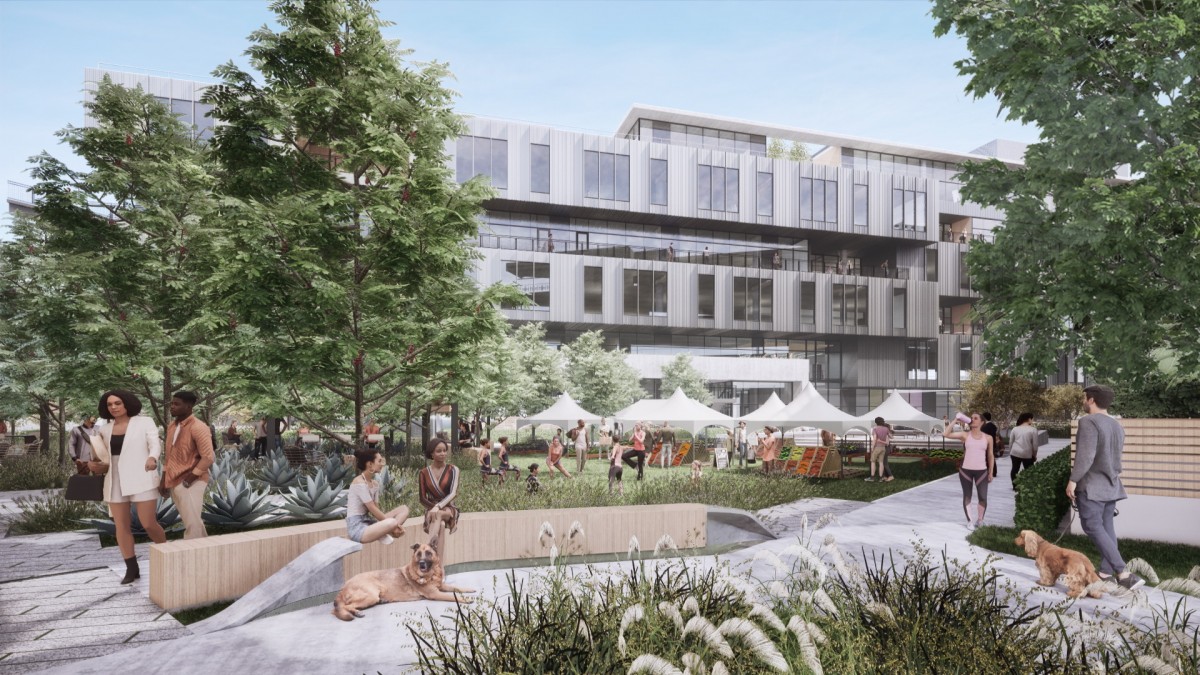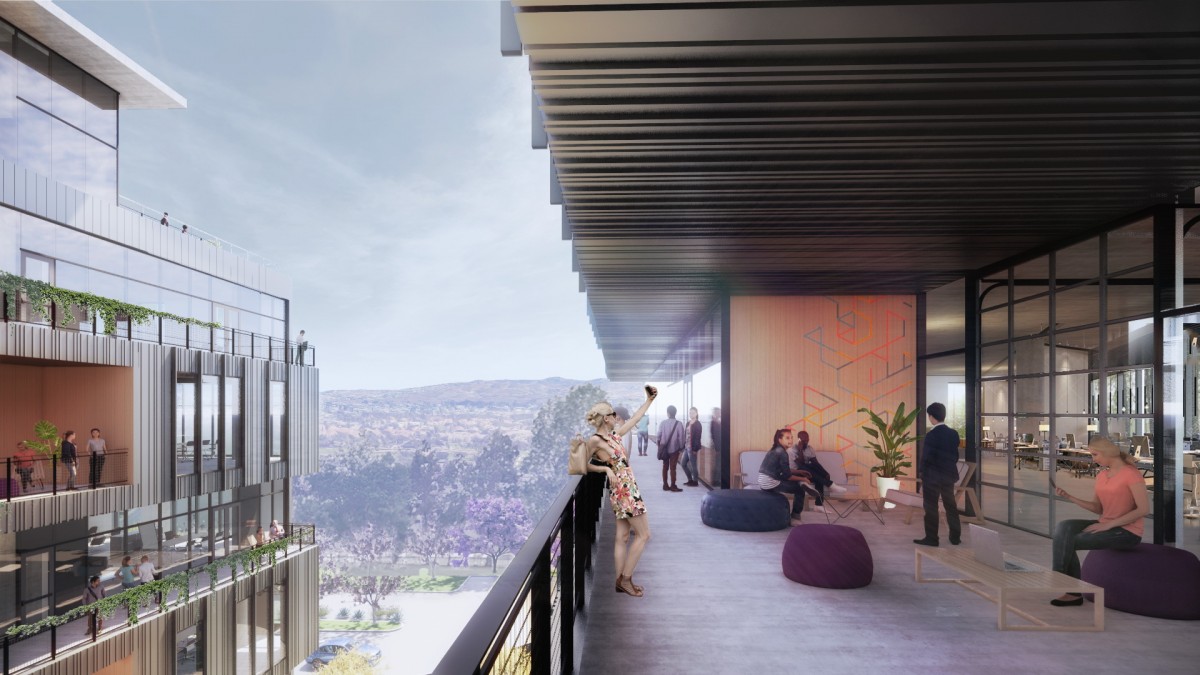The Barranca Parkway office campus is part of an ongoing redevelopment in Tustin and Irvine prompted by the retirement of the adjacent marine corps airfield. In reimagining what this neighborhood could be, the project aspires to create a progressively pedestrian experience within a densifying context – introducing an interconnected campus with a verdant, pedestrian heart, while also questioning and challenging typological assumptions of the core and shell office in Southern California.
The site parti is comprised of an arrangement of three simple volumes that together create a protected courtyard at the heart of the campus. The scheme provides pedestrian connectivity, blurred indoor-outdoor relationships, and common exterior space, celebrating the region’s famous climate and encouraging a community engagement.
The overall scale of the building is broken down through an operation of offsetting every-other floor, creating an alternating rhythm of interior and exterior spaces. This formal articulation, while providing an identifiable and iconic appearance, studies the notion of efficiency in heterogeneity. Often, efficient design of a typical office building would demand a regular and repeating floor plate as the building extends vertically. Instead, we propose a design which creates similarly efficient conditions in un-identical ways.
By offsetting the massing of every other floor, the design takes advantage of regular cores and structural systems, but reconfigures the flow of circulation and space about them. Circulation paths alternate between floors, distributing office users, and even connecting to the adjacent parking structure on selected levels. The mix of exterior balconies, and differing paths create opportunities for rich, diverse experiences. The result is a variegated and occupiable façade which blends and softens the relationship of interior and exterior space.
These indoor-outdoor relations are continued at the front doors of the project. Two lobbies face one-another in conversation. The entry plaza between the two entries is further energized by the adjacent gym, cafe and conference center. Light, material and landscape extend seamlessly from exterior court to interior lobby - creating a unified space to work and meet.
The campus proposes a sustainable vision for the future. Passive strategies include deep overhangs which effectively shade large swaths of glass for daylighting, as well as the provision of operable windows and sectional doors for effective cross-ventilation. Ample outdoor space again contributes to the overall health and wellness of occupants while also containing several biofiltration basins for stormwater management. Lastly, observing a trend away from vehicle-oriented living, the campus adopts a transitional role by providing a porous architecture which connects to the community and celebrates the human scale - establishing a vibrant, increasingly urban vision for the greater neighborhood.
Location
Tustin, CA
Client
Gemdale
Year
2022
Status
unbuilt
Size
272,000 sf
